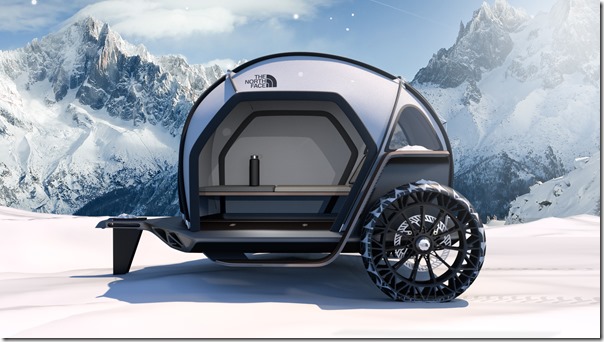BMW Uses Fabric Skin Again
In 2008 BMW revealed a concept vehicle that was unusual in that the body panels weren’t made from steel, aluminum or composites but, rather, a fabric that was fitted over an underlying metal frame.
#aluminum
In 2008 BMW revealed a concept vehicle that was unusual in that the body panels weren’t made from steel, aluminum or composites but, rather, a fabric that was fitted over an underlying metal frame. It is called the “GINA Light Visionary Model,” with the acronym standing for “Geometry and Functions In ‘N’ Adaptions.” While the fabric-surface automobile hasn’t made it, a visit to your local REI’s camping section will give you a good idea of what it was all about, as there is an array of tents that have bows under tension stretching various technical textiles into temporary habitation.
BMW Designworks has worked with The North Face, the company that provides all manner of technical and fashionable clothing and equipment, to develop a camper that one might put on the back of one’s X5 for a trip to Yosemite.

Like GINA, the FUTURELIGHT Camper uses a fabric that North Face has developed that is produced with “Nanospinning technology,” which results in what is claimed to be “the world’s most advanced, breathable, waterproof material.”
The Nanospinning process puts “nano-sized” holes in the material that allows the air to move through the material while preventing water from intruding.
The GINA has the struts beneath the fabric. The FUTURELIGHT puts them on the exterior.
While North Face will be offering products with the new material, the camper is still a concept, so don’t plan on seeing it in a catalog anytime soon.
But while it may not be there soon, the Designworks’ creation seems so appropriate that it may be there later.
RELATED CONTENT
-
Burning Rubber in the Sales Race & More
One of the most-classic, longest-running competitions between cars doesn’t take place on the track or at stoplights on Woodward Avenue.
-
McLaren Masterpieces
One thing that is certain about McLaren Automotive is that when it creates its sculptural masterpieces that are otherwise known as “high-performance cars,” it makes extensive use of carbon fiber materials, as well as serious handcraftsmanship in the execution of the vehicles.
-
INFINITI, F1 and Your Garage
There is a phrase that’s often used to justify manufacturer participation in motor sports that has it, “Win on Sunday, Sell on Monday.” This was particularly the case when NASCAR ran what were “stock cars,” as in cars that were almost like those held in stock at dealerships.


.jpg;width=70;height=70;mode=crop)






